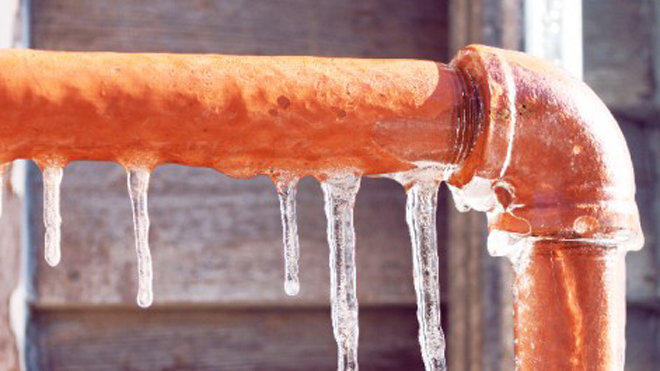This article further down in relation to How To Avoid Freezing Pipes is seriously enlightening. Don't skip it.

Cold weather can wreak havoc on your plumbing, particularly by freezing pipelines. Here's just how to prevent it from occurring and what to do if it does.
Intro
As temperatures decrease, the threat of frozen pipes boosts, possibly resulting in expensive fixings and water damages. Recognizing how to avoid icy pipelines is critical for property owners in chilly environments.
Avoidance Tips
Protecting susceptible pipes
Wrap pipes in insulation sleeves or use heat tape to protect them from freezing temperatures. Concentrate on pipelines in unheated or outside areas of the home.
Home heating methods
Keep interior rooms properly heated, specifically locations with plumbing. Open up cupboard doors to permit warm air to circulate around pipelines under sinks.
Exactly how to identify icy pipes
Search for lowered water flow from faucets, uncommon odors or sounds from pipelines, and noticeable frost on exposed pipes.
Long-Term Solutions
Structural changes
Think about rerouting pipes away from outside wall surfaces or unheated areas. Add extra insulation to attics, cellars, and crawl spaces.
Upgrading insulation
Buy high-quality insulation for pipes, attics, and walls. Appropriate insulation assists keep regular temperature levels and reduces the risk of frozen pipes.
Securing Exterior Pipes
Yard hoses and outdoor taps
Detach and drain garden hose pipes before winter season. Set up frost-proof spigots or cover outdoor faucets with shielded caps.
Comprehending Frozen Pipelines
What creates pipes to freeze?
Pipelines freeze when revealed to temperature levels below 32 ° F (0 ° C) for expanded durations. As water inside the pipes freezes, it increases, taxing the pipe wall surfaces and possibly triggering them to burst.
Threats and damages
Frozen pipelines can cause supply of water disruptions, residential or commercial property damages, and expensive fixings. Ruptured pipes can flood homes and cause substantial structural damage.
Signs of Frozen Pipeline
Recognizing frozen pipes early can avoid them from rupturing.
What to Do If Your Pipes Freeze
Immediate activities to take
If you believe frozen pipelines, keep faucets open up to eliminate stress as the ice melts. Utilize a hairdryer or towels taken in warm water to thaw pipes gradually.
Verdict
Protecting against frozen pipelines needs positive procedures and quick reactions. By comprehending the causes, indicators, and safety nets, home owners can shield their pipes during cold weather.
6 Proven Ways to Prevent Frozen Pipes and Protect Your Home
Disconnect and Drain Garden Hoses
Before winter arrives, start by disconnecting your garden hoses and draining any remaining water. Close the shut-off valves that supply outdoor hose bibs and leave the outdoor faucet open to allow any residual water to drain. For extra protection, consider using faucet covers throughout the colder months. It’s also important to drain water from any sprinkler supply lines following the manufacturer’s directions.
Insulate Exposed Pipes
Insulating your pipes is an effective way to prevent freezing. Pipe insulation is readily available at home improvement stores and is relatively inexpensive. Pay close attention to pipes in unheated areas such as the attic, basement, crawl spaces, or garage. Apply foam insulation generously to create a buffer against the cold. You can also wrap your pipes in heat tape or thermostat-controlled heat cables for added warmth.
Seal Air Leaks
Inspect your home for any cracks or openings that could let in cold air. Seal any holes around the piping in interior or exterior walls, as well as the sill plates where your home rests on its foundation. Additionally, make sure to keep your garage door closed unless you’re entering or exiting. Leaving it open creates a significant air leak that can lead to frozen pipes.
Allow Warm Air Circulation
During cold snaps, it’s essential to allow warm air to circulate evenly throughout your home. Leave interior doors ajar to promote better airflow. Open kitchen and bathroom cabinets to help distribute heat consistently around the rooms. If you have small children or pets, be sure to remove any household chemicals or potentially harmful cleaners from open cabinets for safety.
Let Faucets Drip
A small trickle of water can make a big difference in preventing ice formation inside your pipes. When temperatures drop significantly, start a drip of water from all faucets served by exposed pipes. This continuous flow helps prevent the water from freezing. Additionally, running a few faucets slightly can relieve pressure inside the pipes, reducing the chances of a rupture if the water inside does freeze.
https://choateshvac.com/6-proven-ways-to-prevent-frozen-pipes-and-protect-your-home/

Hopefully you liked our part on How to prepare your home plumbing for winter weather. Thanks so much for finding the time to read our article post. If you liked our post kindly remember to pass it around. We value your readership.
Schedule Service Now